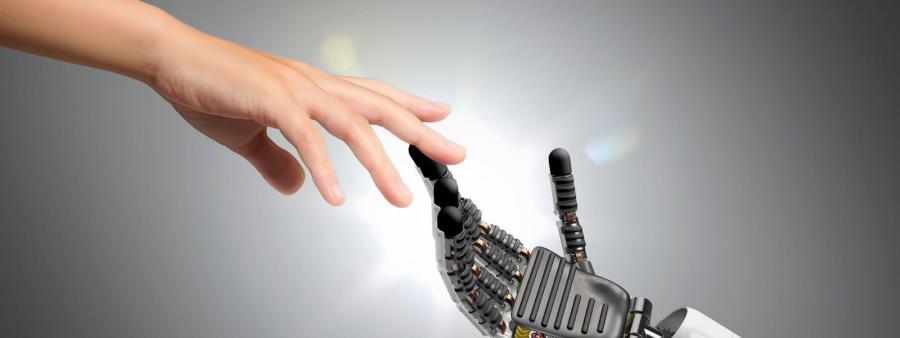Artificial Intelligence: Why is it hitting every industry?

We're living in a time when artificial intelligence (AI) isn't just science fiction anymore—it's part of our everyday lives. The cell phone you unlock with your face, the algorithm that recommends your next Netflix series, or the tool that corrects you when you write a DM (direct message): it's all AI. But its impact goes far beyond the everyday.
Today, AI is transforming engineering, business, art, architecture, philosophy, and even the way we learn.
In this article, we review the applications of AI in different sectors, the opportunities it opens up, and the challenges it poses.
AI as a cross-cutting force
One of the most powerful features of artificial intelligence is its ability to adapt to very different contexts. Whether we're talking about designing a bridge, analyzing customer data, or creating a piece of art, AI can play a role.
According to Innovación Digital 360, industrial sectors adopt AI based on its technological maturity. While it is already used in logistics to predict demand, in healthcare it speeds up diagnoses and in education it personalizes itineraries.
AI applications by sector
Engineering: from design to predictive maintenance
In engineering, AI is synonymous with efficiency. For example, in construction, sensors connected to machine learning algorithms detect vibrations or abnormal patterns in infrastructure to prevent failures before they occur.
In software, AI helps write and debug code automatically, saving programmers time and reducing errors. Companies such as Microsoft already integrate programming co-pilots into development environments.
Business and finance: deciding with data
AI in business not only analyzes data, it turns it into strategic decisions. From predicting which product will sell best next season to detecting fraud in real time with banking systems.
In one of our blog articles, we explain how AI will transform business decision-making in 2025, allowing routine tasks to be automated so that we can focus on what really matters.
Example: when your favorite online store recommends products that are “just what you needed”... it wasn't magic, it was a predictive model behind it.
Education and humanities: more personalization, more questions
In the classroom, AI already acts as an intelligent tutor: it adapts content to your learning pace, suggests exercises, and even corrects automatically. The challenge of AI's impact on education is to balance technology with humanity.
In humanities and philosophy, AI raises profound questions: What does creativity mean when a machine can write poetry? What about the ethics of an algorithm that makes decisions for us?
Art and animation: augmented creativity
The boom in generative AI has also revolutionized the way we create. There are now programs that generate illustrations from a phrase, assistants that animate scenes in seconds, and tools that edit videos automatically.
In many animation studios, artificial intelligence is already being used to speed up repetitive tasks such as coloring or frame interpolation, leaving more room for human creativity. However, a debate is beginning to emerge: is it art if it is created by an algorithm?
Architecture and urban planning: smarter cities
In architecture, AI helps design buildings by optimizing natural light, energy consumption, and structural strength. In urban planning, it allows for predicting traffic flows and designing more livable spaces.
An example: several European cities use AI algorithms to plan green areas that reduce urban temperatures in the summer.
Philosophical convergences and challenges
The cross-cutting nature of AI connects sectors that previously seemed distant. Ethics, for example, cuts across all of them:
-
In business: how can we ensure that an algorithm does not discriminate against certain customers?
-
In education: how can we prevent students from becoming overly dependent on technology?
-
In art: who is the author of a work generated by AI?
The philosophy of technology forces us to reflect on what it means to be human in a world where machines also “think.”
The cross-disciplinary university and AI
The concept of the cross-disciplinary university proposes breaking down barriers between disciplines. And AI is the perfect example of why we need this model.
An engineer can learn from a philosopher to reflect on algorithmic ethics; an artist can collaborate with a data scientist to create new forms of expression; a manager can work with architects to design smart cities.
In short, the university of the future will be transversal... and AI will be its driving force.
Tips for making the most of AI
-
Start with pilot projects: test AI in a small area before scaling up.
-
Encourage multidisciplinary teams: mix techies, creatives, and humanists.
-
Keep ethics in mind: go for transparent and auditable algorithms.
-
Invest in training: every professional should understand at least the basics of AI.
-
Collaborate: universities, companies, and startups form a stronger ecosystem when they share knowledge.
Artificial intelligence is not just a technological tool: it is a paradigm shift. Its ability to cut across sectors invites us to think transversally, to combine knowledge, and to create a future where innovation is inclusive, ethical, and creative.
AI is already present in your daily life: in your cell phone, your bank, your online classes, and the series you watch. The challenge now is how to use it to transform not only our comfort, but also our knowledge, our cities, and our way of thinking.
Want to continue exploring how AI will change your sector?